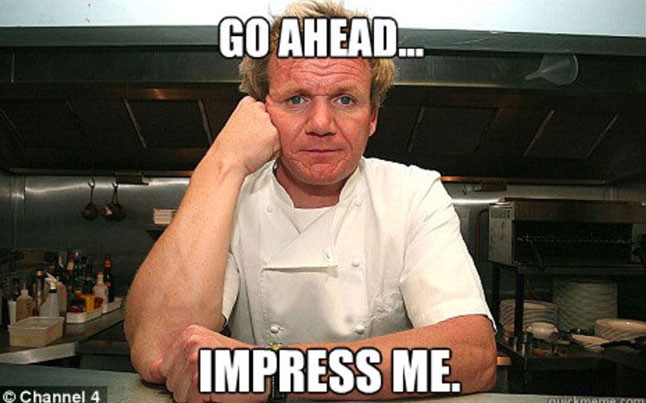What Recruiters Can Learn From This CMO’s InMail
The Muse’s Kathryn Minshew wasn’t thinking about hiring a marketing director when she opened Elliot Bell’s InMail. But in around 150 words, he’d changed her mind. Here’s what he wrote:
Hi Kathryn,
While slightly out of place, I attended the Women 2.0 conference yesterday with EatDrinkJobs and had the chance to see you pitch. I was blown away by you, your team, and most of all, your company.
I spent six years at Seamless.com, working closely with amazing leaders like Jason Finger (who you know well). I see such amazing potential in your company, and I would love to be a part of it in any way. My primary focus is marketing, with a lot of experience marketing to the same corporations and users you seem to be attracting. I'd love to tell you more about how my skill set could help you all reach and exceed your current growth goals.
Congrats on all your current success. Again, I'd love to find a time to chat more about the company and tell you how I could help.
Best,
Elliott
It’s short, sweet, and very convincing. Although the Muse wasn’t hiring, Elliott had nothing to lose when he sent the message. And because it was so good, a few months later Bell had become their new Director of Marketing, later earning a promotion to Senior Director of Brand and Marketing.
For recruiters, Bell’s story is proof that if you can nail the InMail, you can convince a candidate that isn’t job hunting to rethink their position. Below are the ingredients that made Bell’s InMail so strong. And you can use these tips in your outreach.
Be precise, be concise, and most of all, be enthusiastic
The clarity and conciseness of your InMail is a major selling point. No one wants to read an essay in their inbox. The trick is giving a little taste just to whet the recipient’s appetite and convince them to seek out more. And part of that is getting down to business straight away.
There’s no wishy-washiness--you’ll notice that Bell doesn’t ask if there’s a marketing position open. He just dives in, persuading Minshew of his value and teeing her up for his clean, persuasive ask.
“I… had the chance to see you pitch,” Bell tells Minshew in his message. Most recruiters won’t be able to tell candidates they’ve been in the same room as them, but that isn’t the only way to make a personal connection. The key is doing your homework.
If you want to hire this person, make them feel that. Give specific examples of what it is about them that impresses you. Show you’ve read their profile. And while you’re at it, show some genuine enthusiasm for your own company. If you sound ambivalent, your candidate will be ambivalent, too. But enthusiasm--now that’s contagious.
Check out our post on personalizing your outreach for tips on how to do this. It only takes a few minutes, but it’s one of the most powerful tools at your disposal.
Make the opportunity clear and invite further conversation
Without saying too much and letting his reader’s attention drift, Bell lays out crucial aspects of his experience, skillset, and his intention to help The Muse grow and succeed. Recruiters can follow this example in reverse, clearly stating to candidates which elements of their experience and skillset makes them perfect for the job, and shining a light on how the opportunity can advance the person’s career. It’s a simple formula that can prove deeply effective.
Again, being specific is key. Just think, your candidate might have received a dozen similar InMails from other recruiters--why is the opportunity you’re offering so fantastic? Saying that you think they’re right for the role isn’t enough. The trick is to seize their interest with juicy details so they can’t wait to respond and find out more.
Opening the floor to further communication is vital. If someone is on the fence about responding, a vague call to action won’t help matters.
Note that Bell brings this issue to the forefront not once but twice. He first tells his reader that he’d love to tell them more about how his skillset could benefit the company, before reiterating this in the closer with enough variation to avoid sounding like he’s repeating himself.
Giving your candidate a reason to want to get in touch is good. Giving them a nudge to make them get in touch is even better.
Compliment, but be sincere
A compliment never hurts, so long as it seems genuine. Bell handles this perfectly--since he mentions he saw Minshew talk at a conference, his compliment carries some weight.
A little research into your candidate’s online presence makes this possible. They might have a post on LinkedIn that you can bring up. Or their work on a project could have won their current company an award. Be specific about what impressed you. Hollow compliments don’t win any hearts.
It seems obvious, but it’s worth repeating: don’t forget to sound enthusiastic! Think of it as the difference between telling someone their work is impressive with a poker face or a smile. One will likely be met with uncertainty. But the latter will almost certainly earn a smile in return.
Cold outreach can work. It can also fall flat. Every recruiter knows that. But with a few easy tweaks, you can transform your cold InMails from shots in the dark into powerful, well-aimed invitations to success. And it might take as little as two minutes to do.
To receive blog posts like this one straight in your inbox, subscribe to the blog newsletter.
Topics: LinkedIn product tips
Related articles




